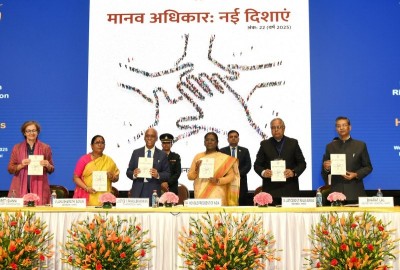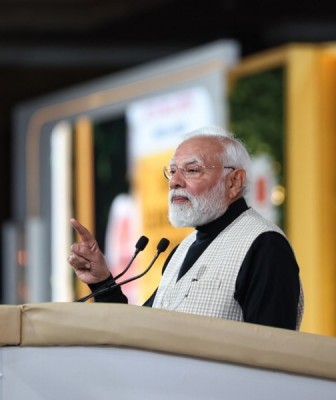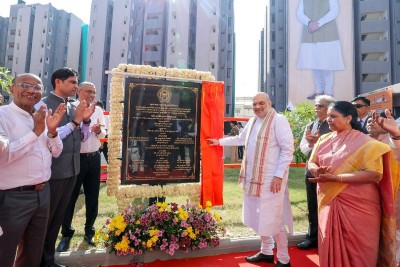The way PM Modi’s US visit is redefining global alliances
Indian Prime Minister Narendra Modi’s visit to the United States signals a pivotal moment in India’s ascendance on the global stage.
This state visit, marked by ceremonial splendor and substantive discussions, reflects the evolving dynamics of India-US relations, highlighting India’s growing influence in global geopolitics and economics.
The geopolitical challenges of our time, particularly in the Indo-Pacific region, underscore India’s expanding role in shaping the international order.
At the heart of Modi’s visit is the deepening partnership between India and the US, a relationship once marred by suspicion and mistrust but now blossoming into one of strategic convergence. The US, long viewing India as a counterbalance to China’s rising dominance, is embracing India as a crucial ally in a region where tensions simmer and influence is contested. While India has historically hesitated to accept the mantle of a regional counterweight, its growing assertiveness and participation in initiatives like the Quad (alongside the US, Australia, and Japan) suggest that India is no longer content to stand on the sidelines.
The Indo-Pacific region, once a flashpoint of differing priorities between India and the US, is now a central arena for cooperation. The US, historically focused on the Pacific and South China Sea, has recognized the significance of the Indian Ocean, a region India has long prioritized. Maritime security and stability in these waters are no longer just Indian concerns but shared objectives in Washington and Delhi alike. This strategic alignment reflects a broader recognition of India’s role as a linchpin in regional security.
But India’s global importance extends far beyond security concerns. Economically, India stands out as one of the few bright spots amid a world facing economic headwinds. With its burgeoning middle class and a thriving market, India has emerged as a prime candidate for the “China plus one” strategy that many global firms are pursuing. The desire for an alternative to China, especially in the manufacturing sector, plays directly into India’s strengths.
This economic potential is further buoyed by India’s active role in global supply chain realignments. The post-pandemic world is grappling with disruptions, and India’s position as a manufacturing hub and technology leader makes it a crucial player in global economic recovery. The Initiative on Critical and Emerging Technology, signed between the two countries, exemplifies this forward-looking cooperation. From artificial intelligence to semiconductor manufacturing, the collaboration between US and Indian firms and universities has the potential to reshape global technological landscapes.
Defence cooperation is also set to deepen during Modi’s visit, with India gradually shifting away from its traditional reliance on Russian arms and moving toward the US as a key defence partner. Washington sees this as an opportunity to strengthen ties, with major deals, including the potential purchase of MQ-9A drones and the co-manufacturing of fighter jet engines in India, on the horizon. While Russia remains India’s largest defence supplier, the shift in procurement patterns is notable and signals India’s willingness to diversify its partnerships.
However, challenges persist. The Ukraine war has exposed the limits of India-US alignment, with India’s reluctance to criticize Russia stemming from its deep defence ties and historical relationship with Moscow. Yet, both nations have chosen to manage these differences rather than let them derail broader cooperation. This pragmatic approach underlines the maturity of the relationship, where strategic convergence takes precedence over individual disagreements.
Trade, too, remains an area of untapped potential. While the US is now India’s largest trading partner, longstanding disputes over tariffs and market access continue to hinder deeper economic ties. Nevertheless, with global supply chains in flux and India’s manufacturing potential rising, both nations have every incentive to overcome these hurdles.
As India steps into a more prominent global role, its relationship with the US will be key to shaping the future world order.
While challenges around trade and human rights remain, the trajectory of this partnership is unmistakable. India’s rise is no longer a question of potential—it is a reality, and the world is watching.
(Text courtesy: Khalsavox.com)
Support Our Journalism
We cannot do without you.. your contribution supports unbiased journalism
IBNS is not driven by any ism- not wokeism, not racism, not skewed secularism, not hyper right-wing or left liberal ideals, nor by any hardline religious beliefs or hyper nationalism. We want to serve you good old objective news, as they are. We do not judge or preach. We let people decide for themselves. We only try to present factual and well-sourced news.







